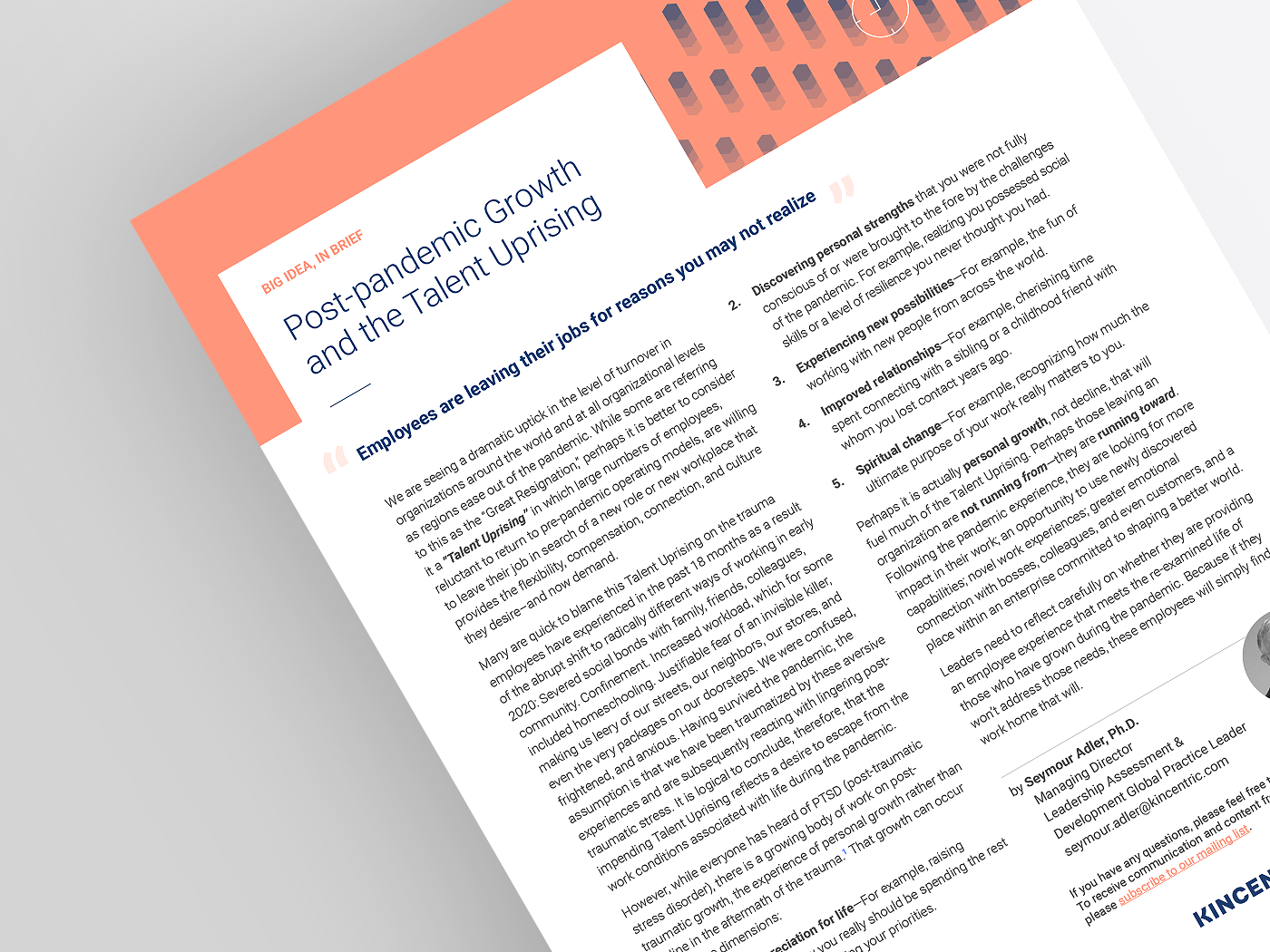
“Employees are leaving their jobs for reasons you may not realize.”
We are seeing a dramatic uptick in the level of turnover in organizations around the world and at all organizational levels as regions ease out of the pandemic. While some are referring to this as the “Great Resignation,” perhaps it is better to consider it a “Talent Uprising” in which large numbers of employees, reluctant to return to pre-pandemic operating models, are willing to leave their job in search of a new role or new workplace that provides the flexibility, compensation, connection, and culture they desire–and now demand.
Many are quick to blame this Talent Uprising on the trauma employees have experienced in the past 18 months as a result of the abrupt shift to radically different ways of working in early 2020: Severed social bonds with family, friends, colleagues, community. Confinement. Increased workload, which for some included homeschooling. Justifiable fear of an invisible killer, making us leery of our streets, our neighbors, our stores, and even the very packages on our doorsteps. We were confused, frightened, and anxious. Having survived the pandemic, the assumption is that we have been traumatized by these aversive experiences and are subsequently reacting with lingering post- traumatic stress. It is logical to conclude, therefore, that the impending Talent Uprising reflects a desire to escape from the work conditions associated with life during the pandemic.
However, while everyone has heard of PTSD (post-traumatic stress disorder), there is a growing body of work on post-traumatic growth, the experience of personal growth rather than decline in the aftermath of the trauma.1 That growth can occur across five dimensions:
Perhaps it is actually personal growth, not decline, that will fuel much of the Talent Uprising. Perhaps those leaving an organization are not running from—they are running toward. Following the pandemic experience, they are looking for more impact in their work; an opportunity to use newly discovered capabilities; novel work experiences; greater emotional connection with bosses, colleagues, and even customers, and a place within an enterprise committed to shaping a better world.
Leaders need to reflect carefully on whether they are providing an employee experience that meets the re-examined life of those who have grown during the pandemic. Because if they won’t address those needs, these employees will simply find a work home that will.
1. Richard G. Tedeschi (2020). “Growth after trauma.” Harvard Business Review, July-August 2020.
Want the latest insights delivered straight to your mailbox?